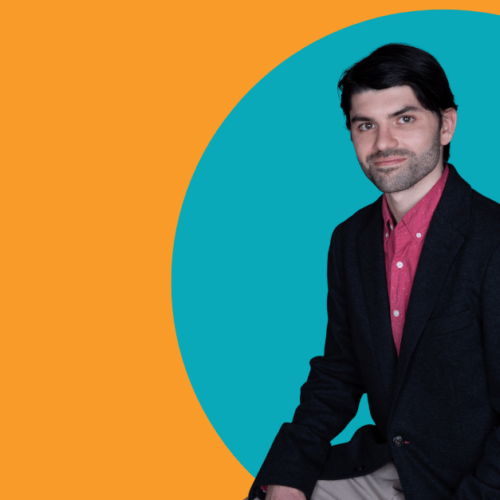In this video, you will discover the dual expertise of Joseph Neidorf, an Emmy-winning composer and the sharp Quality Control Manager at our Americas office. Yes, Joseph recently earned not just one but six nominations at the New York Emmy Awards, with three wins, including Best Musical Composition.
Find out how his unique background in music composition and his approach to quality control contribute to our success. Watch as he shares insights on managing complex projects focusing on client satisfaction.
Neidorf, a master of adaptability and strategic thinking, reveals the behind-the-scenes complexities of harmonising diverse team roles to meet demanding client expectations.
Learn about his innovative approach to maintaining client focus while juggling operational agility globally.
The way I keep my quality control work client-focused is to view everything in context. I constantly assess the project at multiple levels and adapt my priorities to align with client goals. There are countless things I could improve if given unlimited time, of course, but prioritising is actually the easy part. The value I provide is figuring out how to implement those priorities across the web of different people involved and the ways information flows between them. The recruiters, participants, project managers, and study moderators are all operating under individual demands and have distinct perspectives, instincts, limitations, and understandings of their portion of the whole. So, therefore, making my quality control client-focused means learning the details of each of those roles so that I can guide and correct the way information is organised and moved between these various parties.
Our project team was actually built to handle the return business of a single client whose needs presented a few particular ways Kadence could provide value.
This role was created for me with these needs in mind by Ellie, our CEO and Kyle, our Senior Portfolio Executive at Kadence Americas. Although my professional background is in composing film music, I gained valuable experience in my first role with Kadence, which built the foundation of the insights I use today. I helped moderators from this same client conduct studies for consecutive months in Oklahoma City and then New York.
So, I’ll briefly explain the clients’ needs and the strategies I’ve used to help the project team meet these challenges.
First, the client has asked us to provide them with very high throughput. In just the last 2+ years, we’ve processed over 10,000 participants over dozens of protocols, often in multiple locations simultaneously. So tracking these appointments is complicated by the second key demand, which is the fulfilment of very precise and often interlocking targets of demographic quotas, often involving information we cannot confirm until the participant has actually arrived. And third, we’ve had to be extremely flexible to adjust our plans and priorities at a moment’s notice when the client changes their plans of how the technology needs to be implemented or tested, how the schedule needs to align with their staffing needs, etc. So, time is of the essence, and the high degree of logistical complexity makes delays very costly.
So, this is why my success depends on seeing everything in context. I need to make quick assessments with the new information that comes in each day, thinking backwards to the circumstances of the information—where it’s is coming from—and thinking forward to predict how this information impacts the client’s priorities. I find patterns in the mistakes people make when entering data or communicating results and look for opportunities to make their workflow less complex and error-prone.
The high number of appointments per day leads to inevitable moments of confusion on-site, especially given the detailed and often lengthy screening processes that intake staffers take participants through before data collection has begun. And I use my knowledge of the processes and people involved to make sure the live participation trackers that we collect both accurately reflect what occurred and reflect it in a way that’s compatible with our automated analyses.
I wouldn’t have guessed it, but the role of Quality Control manager actually involves a lot of creativity. I get to design new ways to improve how effectively our team meets the client’s needs by balancing the historical context, present-day minutia, and the future impacts of the decisions we make.
Get regular insights
Keep up to date with the latest insights from our research as well as all our company news in our free monthly newsletter.



 Senior Marketing Executive
Senior Marketing Executive Sales & Marketing
Sales & Marketing General Manager PR -Internal Communications & Government Affairs
General Manager PR -Internal Communications & Government Affairs Vital Strategies
Vital Strategies
 Customer Intelligence Director
Customer Intelligence Director